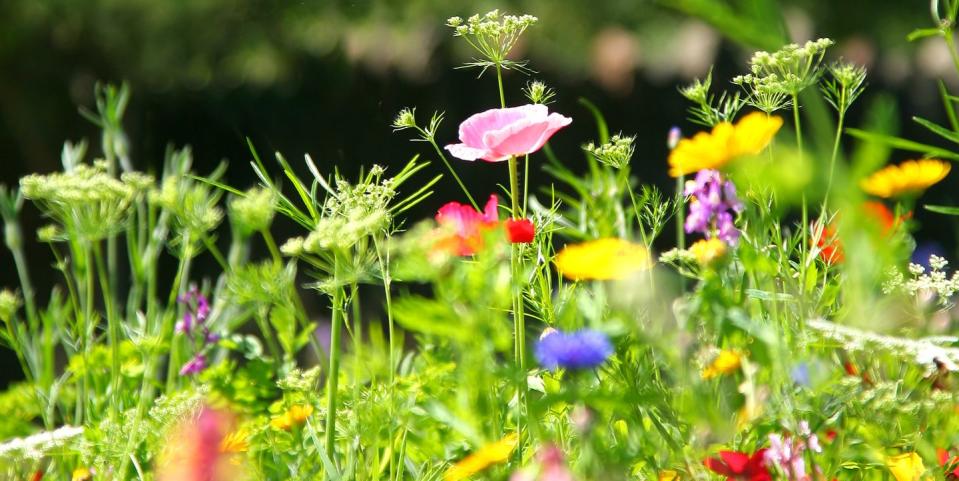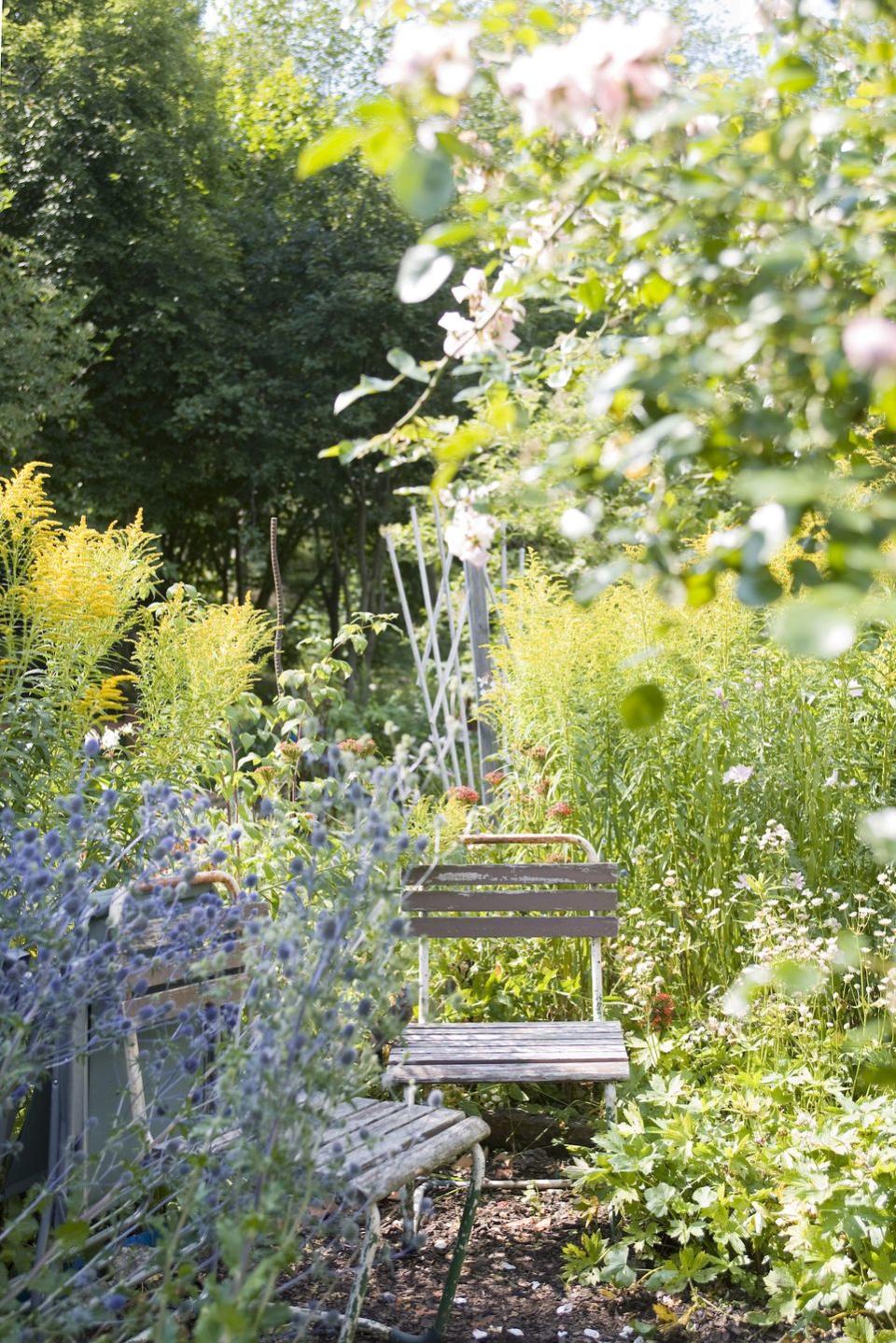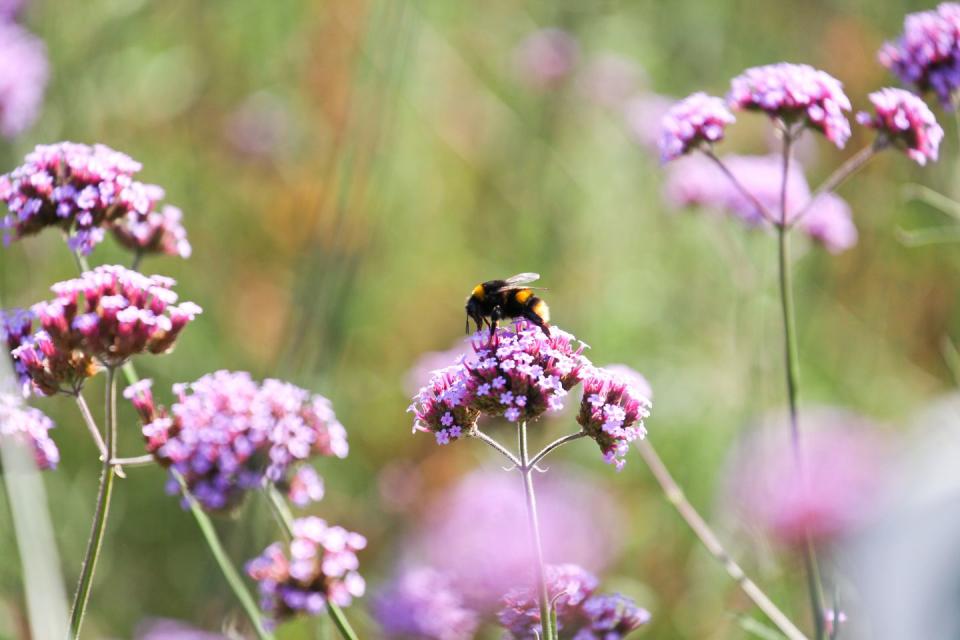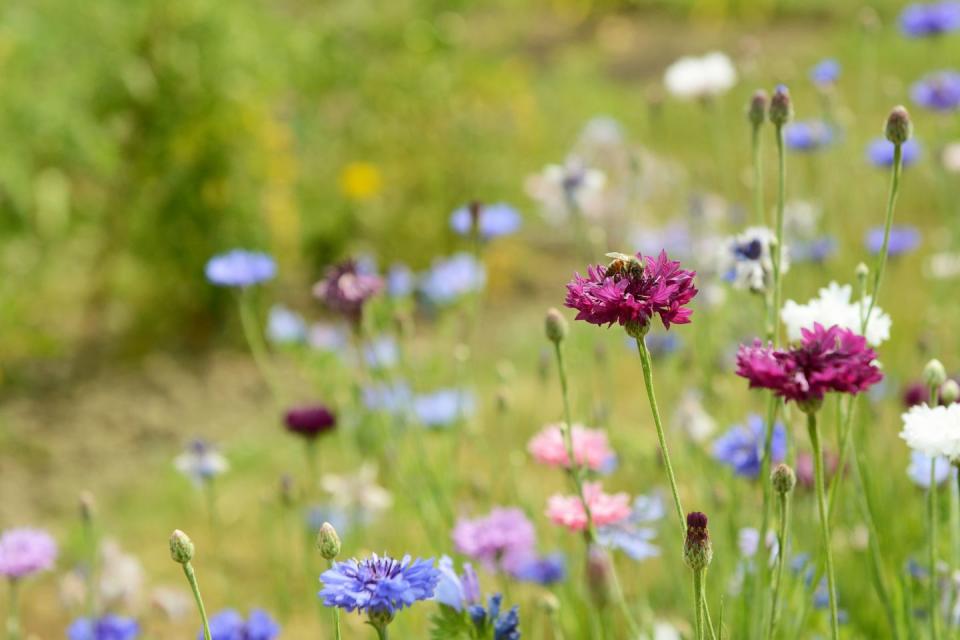6 steps to creating a wildflower garden

Creating a wildflower meadow in your garden will bring many benefits to local bees, hedgehogs, dragonflies, birds and other wildlife. Not only will it become an attractive feature bursting with variety and colour, but it'll create a lively feeding and nesting ground for insects and small animals.
The best time to sow wildflower seeds is in spring, however many meadow seed mixes can also be sown in early autumn (September is best).
Philip Mould OBE, president of Plantlife, believes there is a powerful shift with wildflowers becoming more prominent in residential gardens: 'Over the last half century, we have treated our wild grassland like our seas – intensive farming has eaten up 98 per cent of our traditional meadowland. Environmental consciousness and poetic attachment to what we once had in abundance will now increasingly influence our approach to the garden and the wild over the next half century.
'Wildflowers are often capricious so if you have the space, create varieties of habitats within your garden – shade, dampness and wild. You can also, within reason, harvest the seed of our more common wildflowers from the wild.'
More so now than ever, gardeners are being urged to transform parts of their garden into wildflower meadows to help save the bees. According to the RSPB, it's estimated that 35 bee species are threatened with extinction in the UK due to habitat loss, pesticide use and climate change.

'A future without bees isn't a future worth thinking about — their extinction would alter the delicate balance of the world's ecosystem and significantly affect the global food supply,' say the RSPB.
'And while the biggest threats to bees are climate change, habitat loss, and the heavy use of pesticides, we can all do our part to protect and preserve these precious creatures. If you're lucky enough to have a garden or even a balcony, just making a few small changes can make a huge difference to bee populations.'
Wildflower meadows aren't as tricky to grow in your own outdoor space as they may first seem. Here's how to plant and maintain wildflower growth in your garden.
1. Prepare your lawn
Wildflowers need low fertile land to grow; this is to ensure long grasses don't take over the garden. If you do not have a naturally low fertile lawn, it's really important that you don't use weed killers and to mow regularly before planting. Tip: Planting mustard plants can lower the fertility of the soil and this is recommended in the first year of establishing your meadow.
2. Pick the right time and place
When it comes to planting your wildflowers, it's best to do these in the spring or early autumn, but this can vary so check each species of flower. If you plant seeds in the autumn, it will tend to lie dormant until the next spring. The location of your meadow is likewise incredibly important. Opt for a sunny and flat space for the best results.

3. Prioritise bee-friendly plants
Certain plants attract more nectar than others, for example, cornflowers and oxeye daisies. Yellow rattle is also great to add into your seed mix as it encourages species diversity and stops the growth of vigorous grasses growing.
The RSPB also suggest letting weeds grow freely: 'Though there are certain areas of your garden you'd prefer to keep weed-free, consider leaving a corner or two of your garden undisturbed, allowing weeds to grow naturally. Weeds such as dandelions and lawn clovers provide vital pollen and nectar for visiting bees.'
4. Sow the seeds
Once you have prepared your soil, it's time to sow the seeds. The best way to do this is to dig plugs around six inches in length and two inches wide. Ensure you mix your seeds together with the plugs so that you can have a variety of vibrant colours across your garden. Keep the seeds well-watered, and soon enough, your wildflower meadow will be blooming.
5. Maintain your meadow
A common mistake is to mow the lawn too early. Flowers need to be fully matured to drop all their seeds ready for next year, so it's advised to mow in August, and then once again before the first frost. Ensure you clear the clippings after every mow to keep nutrient levels in the soil low. Once your meadow has been established for a few years, it will be very low maintenance.

6. Alternatively, invest in a meadow lawn
If you don't have the time to grow your own, there are some easy alternatives you can get your hands on instead. Meadow lawns, with 50 per cent grasses and 50 per cent wildflowers sown in them, can be purchased ready to roll out in your garden. They are also naturally low in nutrients and have a mixture of oxeye daisies, bugle, yarrow, yellow rattle and birds-foot trefoil.
• Types of wildflower meadows
Both can easily be grown from mixed wildflower seeds (the most cost-effective option) or by using wildflower plug plants. Garden experts Thompson & Morgan explain...
Annual wildflowers – such as as cornflowers and poppies – bloom in their first season, giving a bright show of colour from early summer before dying and setting seed in late summer or autumn. They look very effective scattered in beds and borders to create a colourful display.
Perennial meadows – consisting of grasses and flowers – is a more genuine representation of wildflower meadows found naturally in the British countryside. This type of meadow thrives best on poor soils where the grass won't outcompete the wildflowers, but it takes several years to establish properly and flower.
Follow House Beautiful on TikTok and Instagram.
You Might Also Like

 Yahoo Finance
Yahoo Finance 
